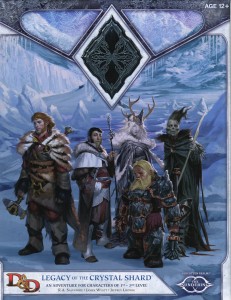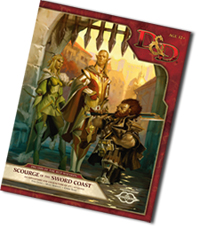While the Dungeon’s Master team enjoys some well-deserved vacation time, we’re breaking out the greatest hits and shining a spotlight on a few of our favourite articles from 2013. We’ve searched for hidden gems that our newer readers might have missed and our long-time readers will enjoy reading again. Enjoy a second look at these greatest hits from Dungeon’s Master.
The Cat Lord remains one of my all time favourite creatures in D&D lore. Sure Dragons have their appeal but there are so many of them that it’s tough to pick just one instance of one type and say this it is my favourite. The Cat Lord is one unique being filled with mystery and awe, not a template or race that you can throw at PCs over and over again. I always felt that he should have originally been presented in Deities & Demigods rather than the Monster Manual II. And perhaps it’s that idea that he’s unique that heightened his appeal for me.
It’s rare in D&D to have one of anything in the monster department. The Monster Manual is a cyclopedia of monsters designed to be dropped into your game for the PCs to battle, and in most cases kill. But just because they killed a bunch of Orcs this game doesn’t mean that they can’t or won’t face Orcs again. Same with Beholders, Illithids, Dragons, Giants, you name it. It doesn’t matter how tough or weak a monsters is, there’s bound to be another one somewhere in the world your PCs inhabit. These creatures might be rare, but at the end of the day very few are unique.
Unique creatures are tough – and I don’t just mean in the stats department. If you choose to use a unique creature in your game you have to decide how interactions with PCs will carry forward into any future interactions this creature may have. This is important to the adventures that face him now and may face him again later, but it’s also important for completely different adventurers that may face him later.
If your group rotates DMs but keeps playing in the same continuity, how will other DMs choose to play the unique creature if they bring him into their games? How will their choices react and interact with any plans you might have had for that creature down the road. Does the new DM simply decide to create a new incarnation of the unique creature (thereby making him no longer unique) or does he follow the “lore” you’ve created for this creature?
As a DM I prefer to stay away from unique beings like deities or named monsters for exactly this reason. As cool as these creatures generally are, there’s just too much work keeping the history straight. What’s even more difficult is using a unique creature in a memorable way and then expecting the other DMs to keep their hands off. In the end it’s easier to just admire from afar and have everyone keep their hands off. This is the only sure way to ensure the creature’s awe remains in place for everyone.
From April 3, 2013, Dungeon’s Master once again presents: Cat Lord.


